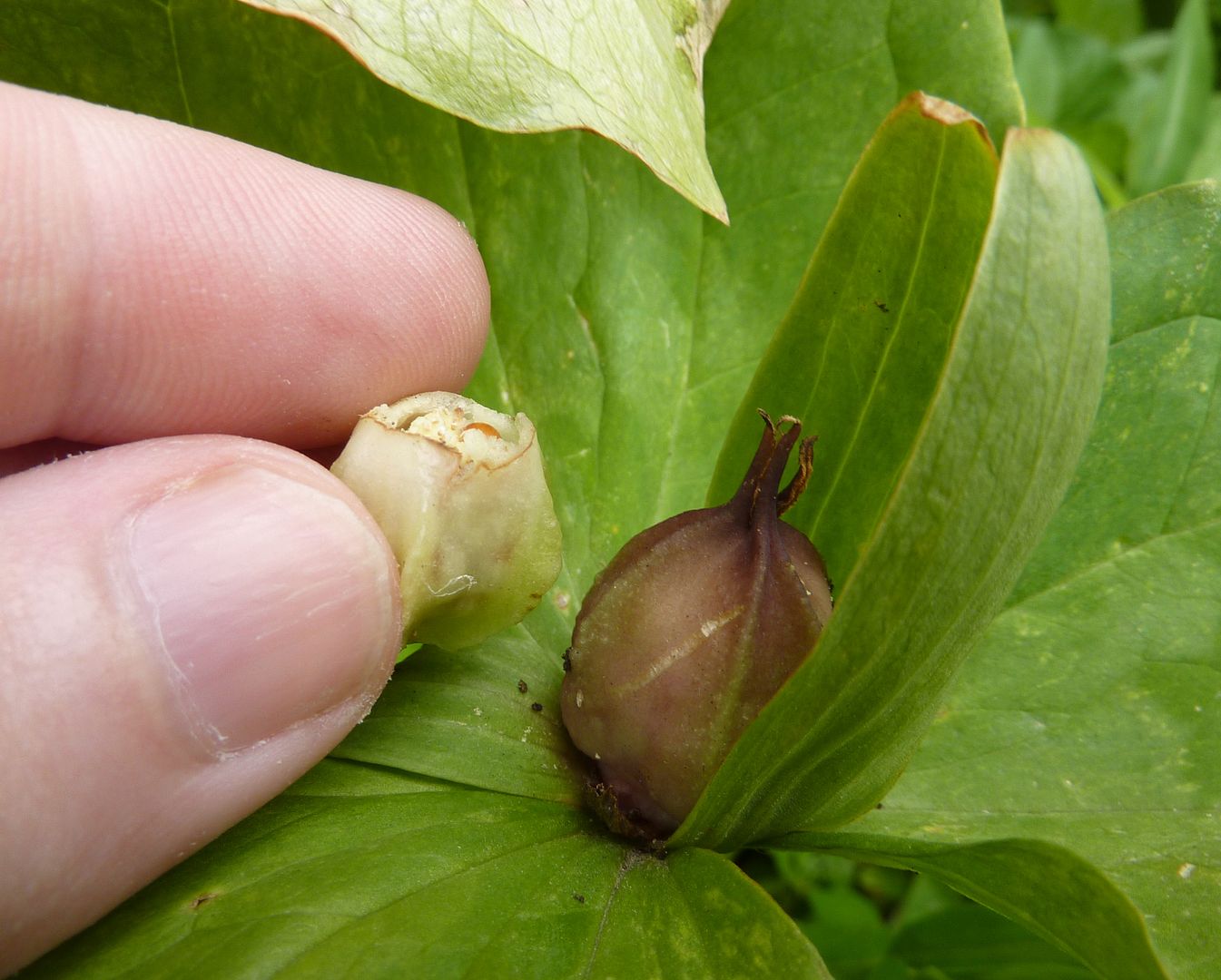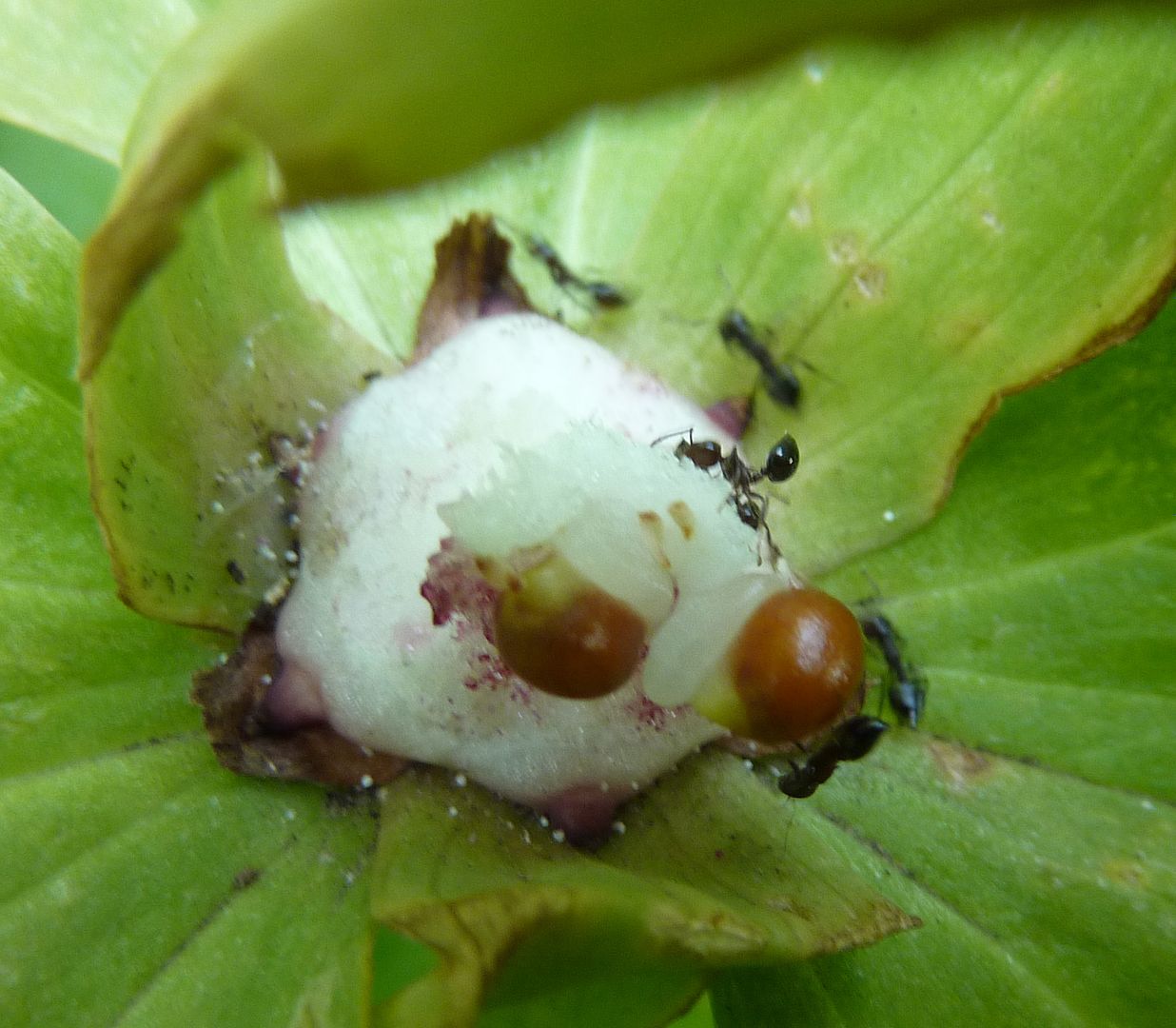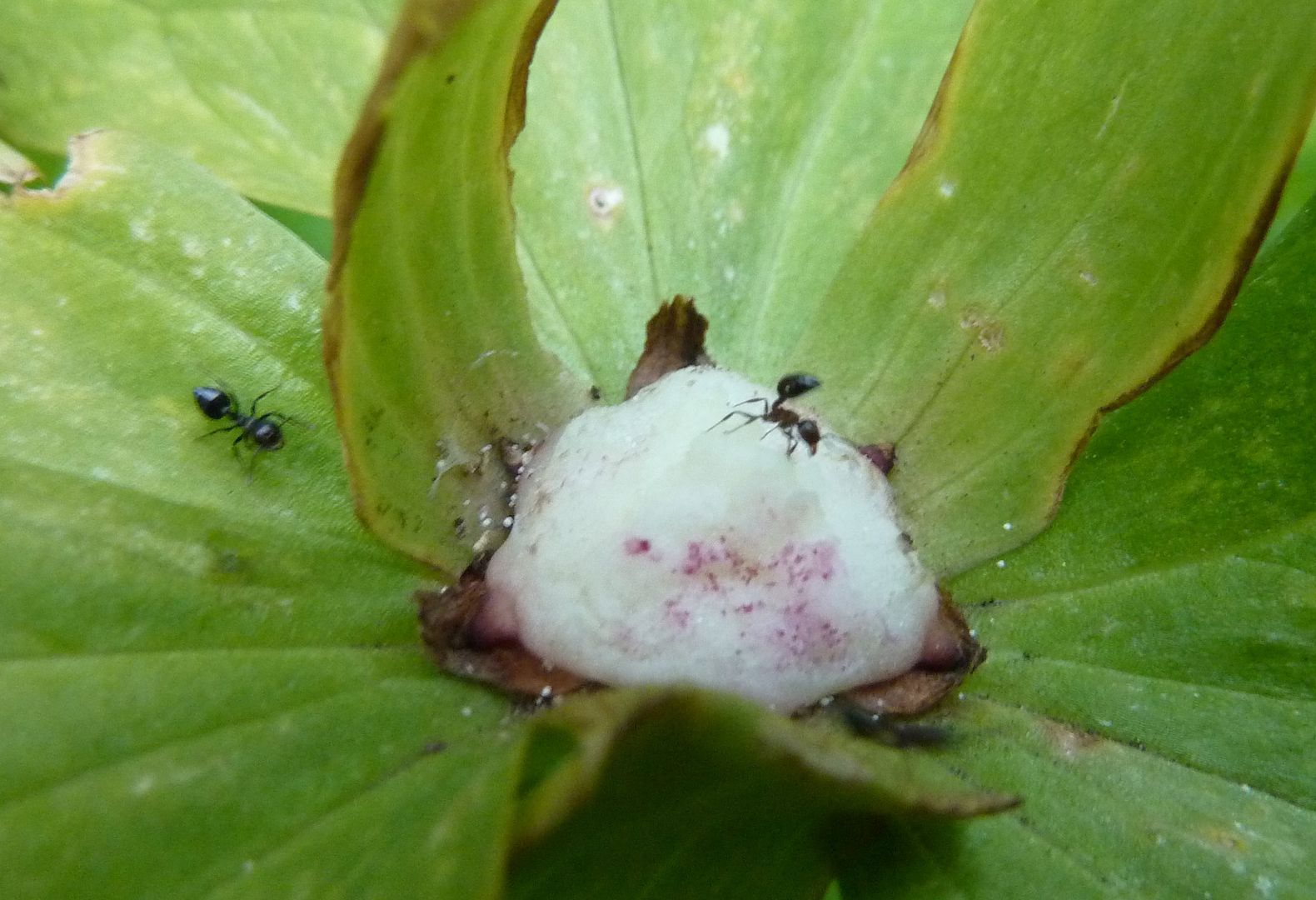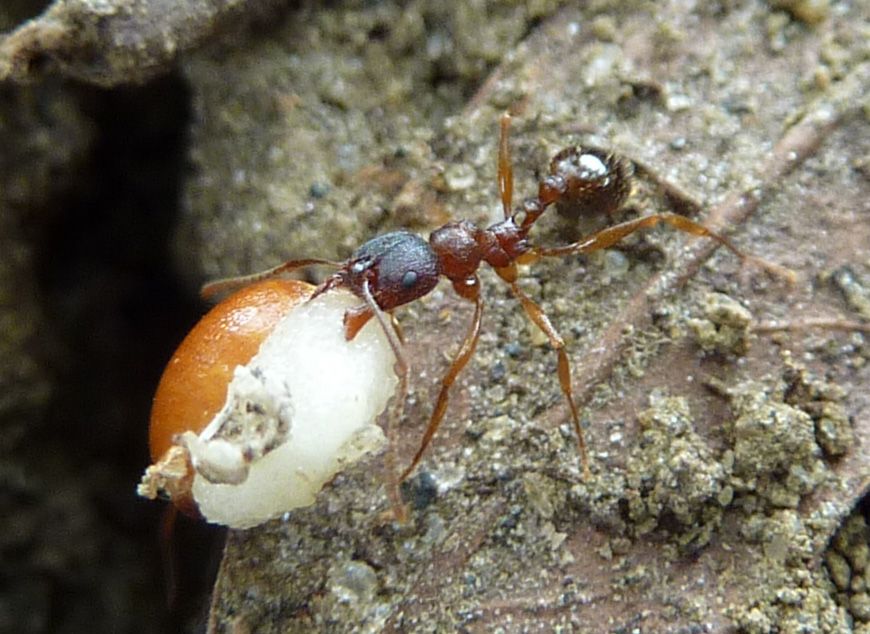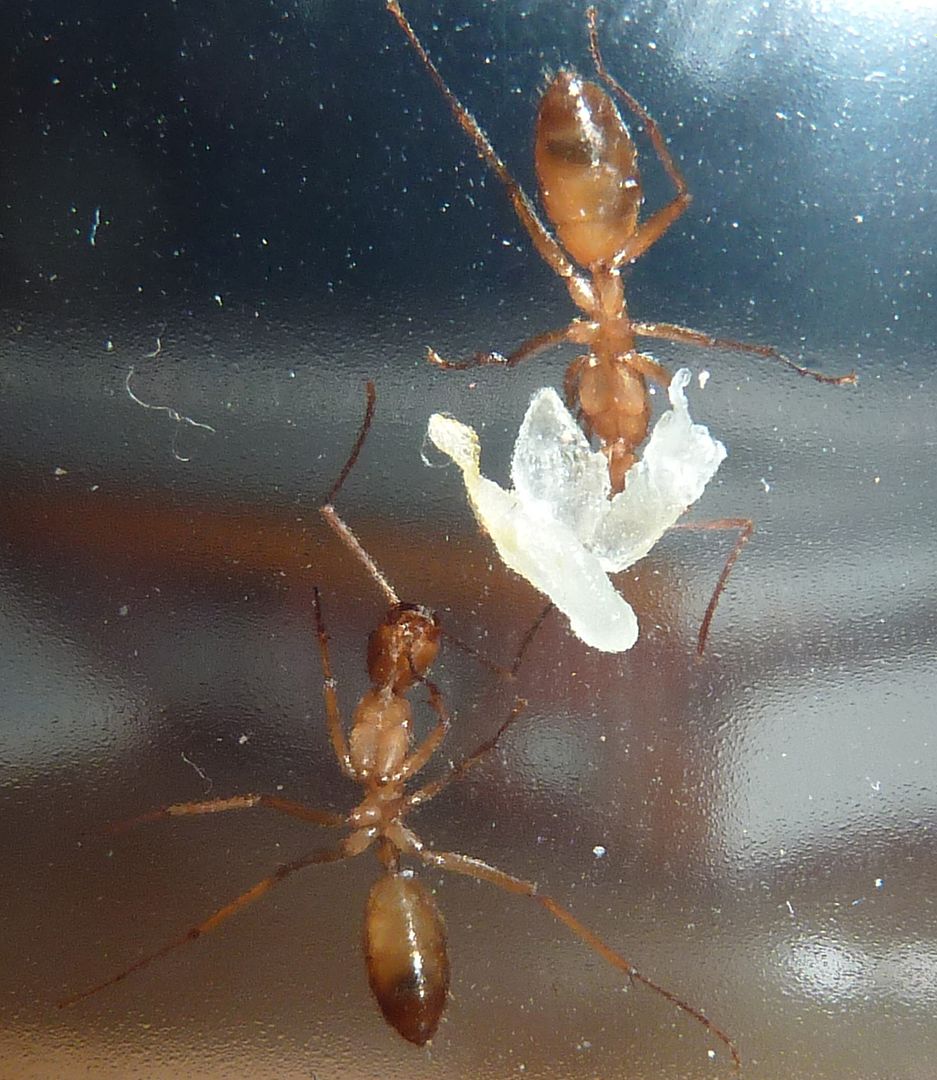I've been having a busy week. Issues at work, Harvesting Honey, and it figures the Trillium cuneatum berry decided to open. I want to turn the harvesting honey bit into a show so I'll save that for later. Work issues are of course Work and according to the employee manual "I do not legally represent the company," and it's not related anyhow. So that leaves the Trillium thing.
Going back to an earlier photo we have Trillium "berries." They're a leathery pod-like structure filled with a fleshy material with elaiosome covered seeds.
The berry eventually opens up and is quickly found by ants. Trilliums rely on ants to disperse their seeds. But not all ants are created equal in doing the job. Here we see a Crematogaster species simply foraging inside the seed for the elaiosome and flesh around the seeds, as opposed to taking the seeds back to the nest. Had they dragged these seeds home they would not likely be successful. Crematogaster often nest in rotting wood or hallow cavities. While many Trillium like growing in organic rich soil, sprouting out the sides of a rotting log is not ideal. On the other hand many Crematogaster species are known for their incredibly long foraging lines. This colony in particular runs the full length of our fence, passing through the front drive way, into the front garden, across the front step, into the side garden, and I lose it from there somewhere in the neighbor's yard.
I doubt they would even drag the seeds anywhere though. Other ants, typically larger in size, don't have as much of an issue with dragging food to the safety of the nest.
Crematogaster get the common name Acrobat Ant for their defensive stance. They are armed with a stinger that dispenses droplets of venom. They use it like a paint brush to lubricate the joints of their foes with it.
Even after the berry is gone they still treat the remaining flesh as a food item.
Naturally I've done some testing with my seeds. I've found common forest species such as Aphaenogaster (pictured above), Myrmica, Formcia, and Camponotus all carry the seed home. Though in the case of Camponotus there's the rick of ending up inside a tree or way to deep under the soil among tree roots. What's neat is studies have show colonies that have elaiosome as a food source produce more new queens the fallowing year. Specifically this applies to Aphaenogaster and Myrmica. Though another study found in some species of Myrmica they produced more workers.
It's unclear why and which is more beneficial. The bottom line though is these are a plants that make Ant Food. As an experiment I'm feeding all my captive colonies the stuff to see if it has any effect. Pictured above is Camponotus castaneus.
Two things I've noticed: The first is that elaiosome is tough, fleshy, and very much attached to the seed. The second is Trillium seeds are hard like uncooked popcorn. It's likely they take two years to germinate to decrease the possibility of being eaten. Aphaenogaster and Myrmica are both in the subfamily that specializes in starches, a.k.a. seeds. It's likely they become lost in the nest during the 2 years before they germinate, often the colony will have moved on entirely.
